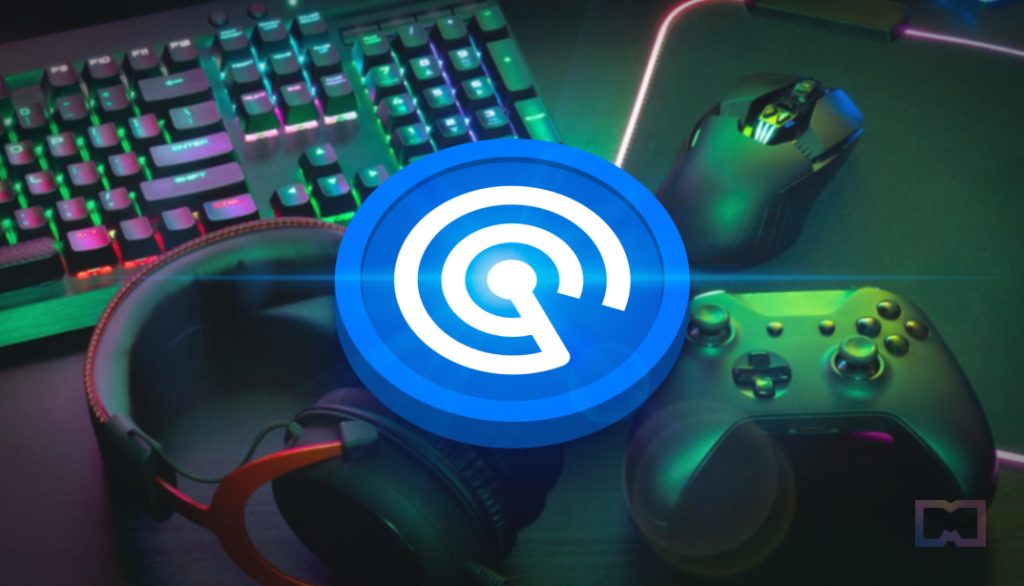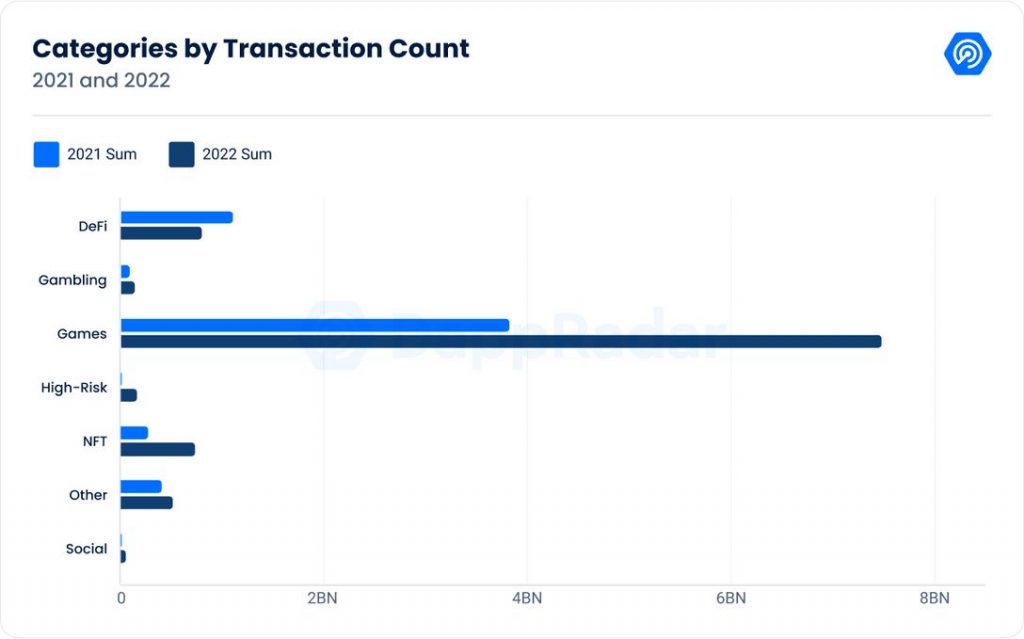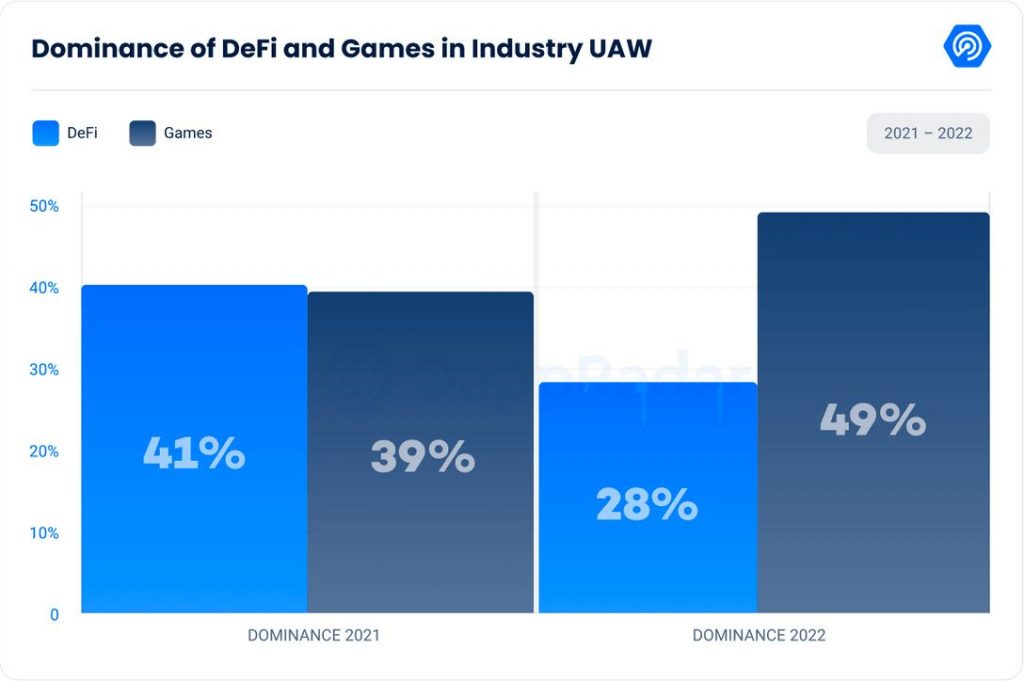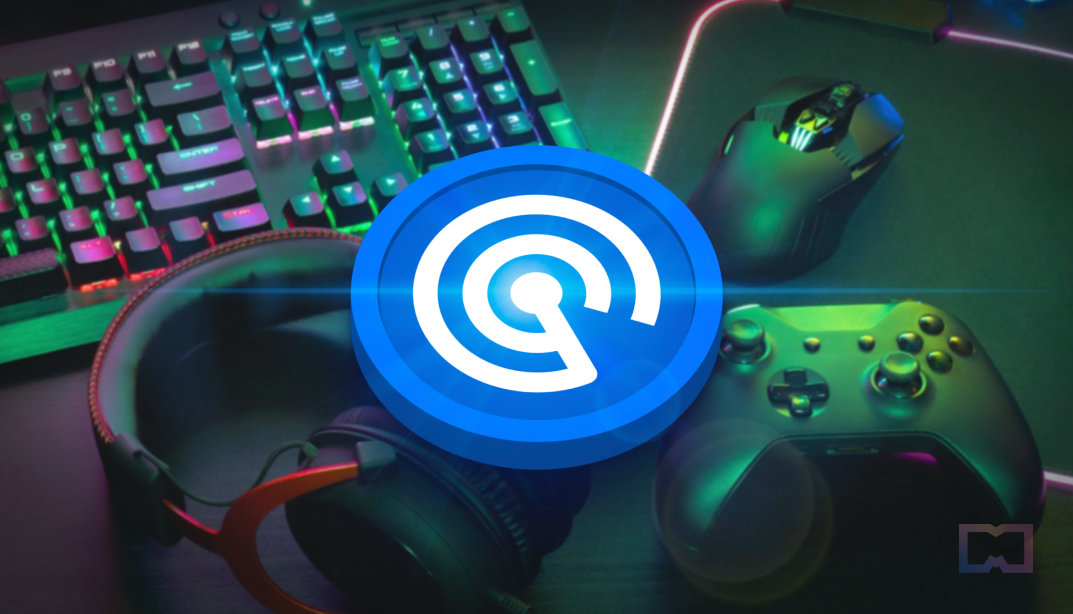[ad_1]

Crypto and DeFi have seen a downturn, and NFTs have reached their lows, but blockchain gaming has been moving forward despite some slumps. There’s no surprise there—some experts believe that the metaverse will first be adopted in the gaming sector. In addition, blockchain-powered games are becoming increasingly advanced, thus becoming more attractive to players.
In its industry report for 2022, DappRadar noticed that gaming is currently the most popular category for applications based on the blockchain. In 2022, web3 games saw a staggering 94.17% increase in transaction numbers compared to 2021. No other sector has witnessed such large-scale growth.

“The gaming sector accounts for 49% of the industry’s usage in 2022,” DappRadar discovers
While the web3 gaming industry has faced some challenges in recent years, the market has seen a positive outcome in 2022. The number of unique active wallets (UAWs) for web3 gaming has grown this year to around 1.15 million dUAW on average. This represents nearly half of all daily blockchain activity, with the transaction count going up by 94.17% over the year and reaching 7.44 billion, DappRadar wrote.

Ethereum has been the most popular blockchain used for gaming, with Solana, Polygon, and Immutable X behind it. The Ethereum network has held around 60% of the market share in secondary market trading of in-game NFTs.
DappRadar named Splinterlands and Alien Worlds the two most popular games in the market based on the number of unique active wallets. However, funding for the blockchain gaming industry has slowed down this year.
“The companies that are receiving the most funding are those that are able to produce high-quality content that utilizes blockchain gaming infrastructure,” DappRadar wrote.
Positive changes in blockchain gaming
Blockchain games based on the play-to-earn (P2E) model have experienced a fall-off this year. Most P2E projects lost over 90% of their market capitalization in 2022. Now, many web3 game creators are working on changing the mainstream opinion that blockchain games are about earning crypto. Instead, developers are looking at blockchain as a tool to improve gameplay, prioritize the free-to-own model, aim to create fun games, and offer ownership and immersive experiences. This mindset will likely move into 2023.
“The blockchain gaming market has undergone significant changes over the past year. 2021 saw a massive influx of “investors” and web3 curious people to the promise of play-to-earn games. Unfortunately, most of the models failed. These web3 games offered a tool for speculative investors to spend $1 and get out $2, which made the gaming component secondary to profits,”
Jason Dooney, the Chief Product Officer of blockchain game Legends At War, told Metaverse Post.
Dooney also said that while P2E caused a lot of people to question the validity of web3 gaming, the market conditions created a unique opportunity for the best, long-term projects to build and the web3 gaming ecosystem to recalibrate.
The future looks good for web3 gaming
“We believe that next year will enable gaming studios to launch long-awaited projects that leverage technological improvements and player-first methodologies. New models that reward user-generated content, exciting gameplay, and free-to-own systems will emerge victorious. Further, we will see the rise of AI-generated content, and we are eager to see continued innovation throughout the upcoming year,” Wojciech Kaszycki, the CEO of Legends At War, told Metaverse Post.
Generative AI helps to augment the player experience to match the players’ level and ensure gameplay is rewarding and unique for every player. This is one of the examples of how emerging technology is bringing gaming to the next level.
Researchers at DappRadar concluded that although there are several challenges to overcome (for example, scalability and economic design). Nevertheless, the blockchain gaming industry is positioned ideally for future growth and mainstream adoption.
Related posts:
[ad_2]
Read More: mpost.io









 Bitcoin
Bitcoin  Ethereum
Ethereum  Tether
Tether  XRP
XRP  Solana
Solana  USDC
USDC  Dogecoin
Dogecoin  TRON
TRON  Lido Staked Ether
Lido Staked Ether  Cardano
Cardano  Hyperliquid
Hyperliquid  Wrapped Bitcoin
Wrapped Bitcoin  Wrapped stETH
Wrapped stETH  Sui
Sui  Bitcoin Cash
Bitcoin Cash  Chainlink
Chainlink  LEO Token
LEO Token  Avalanche
Avalanche  Stellar
Stellar  WhiteBIT Coin
WhiteBIT Coin  Toncoin
Toncoin  Shiba Inu
Shiba Inu  USDS
USDS  WETH
WETH  Wrapped eETH
Wrapped eETH  Hedera
Hedera  Litecoin
Litecoin  Binance Bridged USDT (BNB Smart Chain)
Binance Bridged USDT (BNB Smart Chain)  Polkadot
Polkadot  Ethena USDe
Ethena USDe  Monero
Monero  Bitget Token
Bitget Token  Coinbase Wrapped BTC
Coinbase Wrapped BTC  Pepe
Pepe  Uniswap
Uniswap  Pi Network
Pi Network  Aave
Aave  Dai
Dai  Ethena Staked USDe
Ethena Staked USDe  Bittensor
Bittensor  OKB
OKB  Internet Computer
Internet Computer  Aptos
Aptos  BlackRock USD Institutional Digital Liquidity Fund
BlackRock USD Institutional Digital Liquidity Fund  NEAR Protocol
NEAR Protocol  Cronos
Cronos  Jito Staked SOL
Jito Staked SOL  Ondo
Ondo  Ethereum Classic
Ethereum Classic